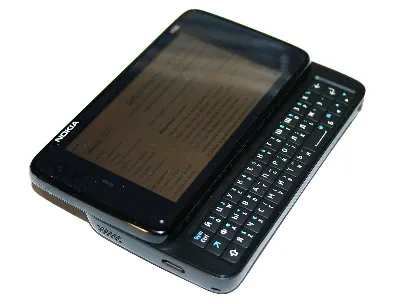TAP TO SEND
December 8, 2010
1BTC:$0.238800
- Artist
- Fact Date
- Fact #
- undefined
- Printing Specifications
- Paper / Stock
- Page Size
When Bitcoin launched, it only had a rudimentary desktop wallet, while a mobile version was still years away. Quickly, though, its community chipped away at these challenges until December 8th, 2010 when the first mobile-to-mobile BTC transaction occurred. Forum member ribuck sent 0.42 BTC using a Nokia N900.
When the Bitcoin network went live in 2009, smartphones were still in their infancy. The iPhone had been released in 2007, followed by the first Android smartphone a year later, but at the turn of the decade most users were still reliant on what we now regard as old-school cellphones from the likes of Sony and Nokia.
Getting Bitcoin to work on a cell phone in 2010 was no mean feat. At the time, Bitcoin users ran full nodes on desktop PCs, smartphones were far less powerful, and mobile apps were in their infancy. Running the official Bitcoin client required downloading the entire blockchain and performing frequent computations to keep it in sync.
Bitcoin’s early users were nothing if not inventive, however, and where most people would have seen an obstacle, they saw an opportunity. It was against this backdrop that an ingenious experiment took place that saw two community members attempt to send bitcoin from one phone to another, using Nokia’s N900 smartphone.

The N900 was uniquely suited for this purpose because it ran Maemo 5, a Linux-based operating system that provided a native terminal and root access. On December 7th, 2010, forum user “Doublec” announced that, with a few modifications, he had successfully compiled and executed the Bitcoin client on the Nokia device. “It wasn't too hard,” he wrote. “I had to build the right versions of libdb and libboost and make one minor change to [the code].”
Bitcoin Goes Mobile
Even with the N900 running Bitcoin, the going wasn’t easy. Syncing the chain on the phone was slow and energy-intensive, taking a good 10 hours according to “Ribuck,” the second user to attempt the feat. The device had to be plugged into mains the entire time – syncing Bitcoin’s entire transaction history was too much for any mobile battery to handle, especially the thirsty N900, which ran hot at the best of times.
With Bitcoin now running on two separate mobile devices, the only thing left to do was make a cell-to-cell transaction and fully validate the concept. Naturally, it fell to Doublec and Ribuck to make history by attempting the first phone-to-phone bitcoin transfer. As they synced their respective devices, they kept forum users apprised of their progress.
“This is so cool. I’ve installed it on my N900 and am up to block 2,000,” Ribuck wrote on December 7th, 2010. “Let me know your bitcoin receiving address, and we can make the first p2p [phone-to-phone] transaction.”
Doublec posted a Bitcoin address he’d generated on his N900, allowing forum users to track their progress. Ribuck waited until his node was fully synced, which ran into the next day, and then entered Doublec’s wallet address into his client, writing: “I sent 0.42 BTC from my N900 at 10:55 GMT. If you receive it, that’s the first ph2ph bitcoin transfer.” Ribuck responded in the affirmative and it was a done deal.
While the amount transferred was trivial, it was a moment of huge significance in demonstrating Bitcoin’s portability. Bitcoin could in fact run on mobile hardware, opening the door to mobile wallets. But the experiment also underlined the need for more efficient solutions that could accommodate smartphones’ limited processing and battery power. As usual, it wouldn’t take long for the Bitcoin community to rise to its next challenge.
- Artist
- XXXXX
- BTC On this day
- December 8, 2010
- Market Cap
- $1,151,207
- Block Number
- 96,121
- Hash Rate
- 0.092 TH/s
- Price Change (1M)
1%
- Price Change (3M)
290%
- Price Change (1Y)
34014%
